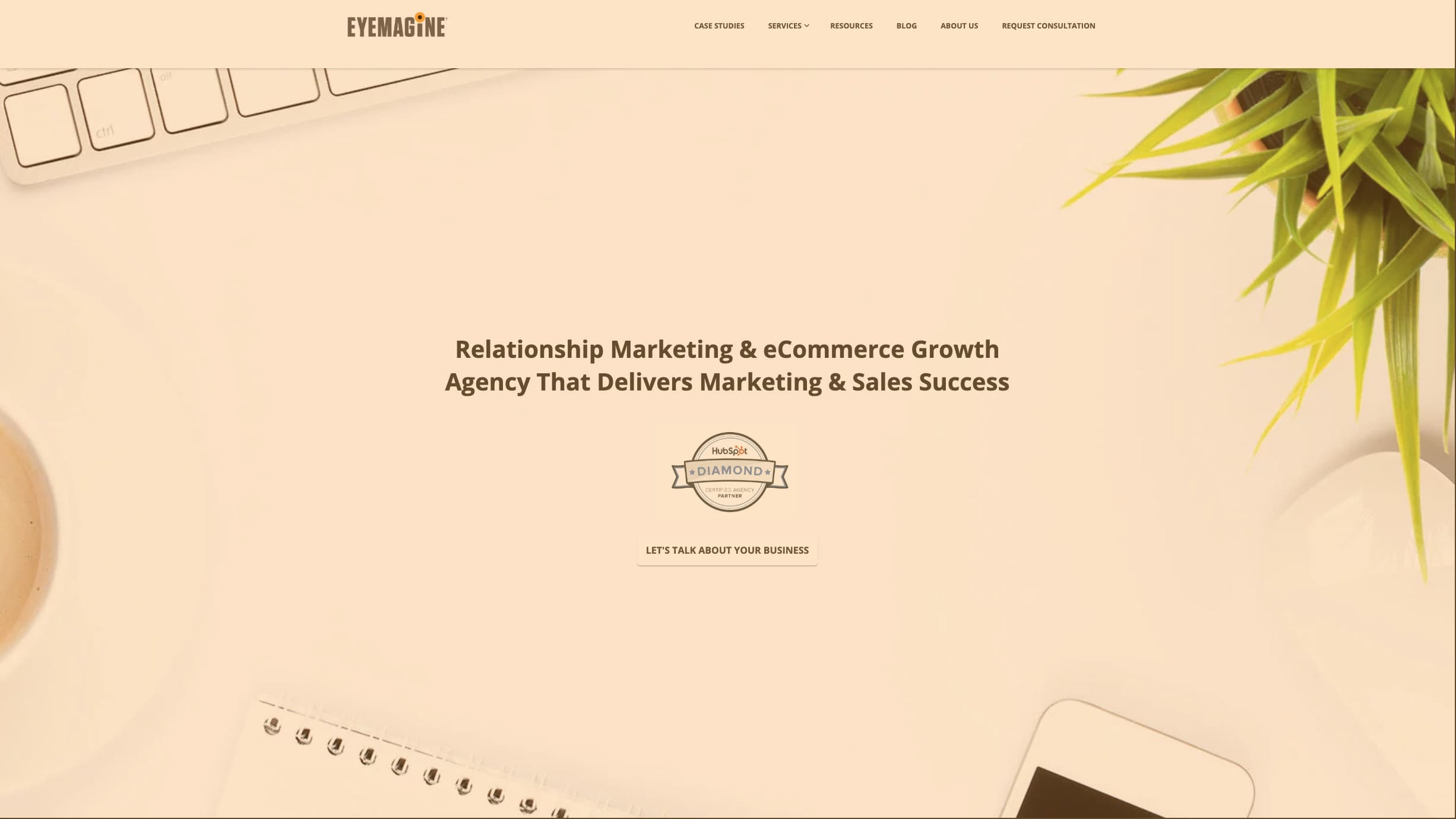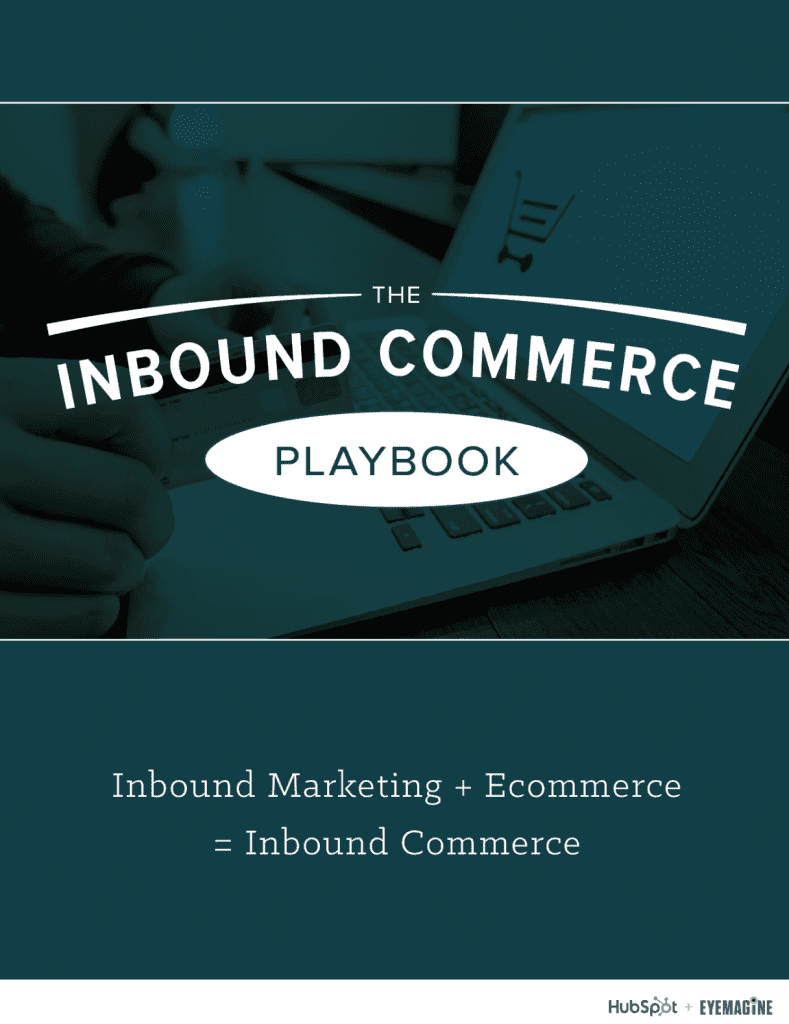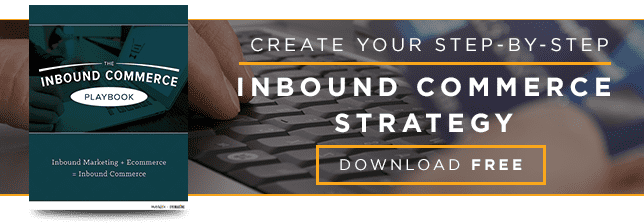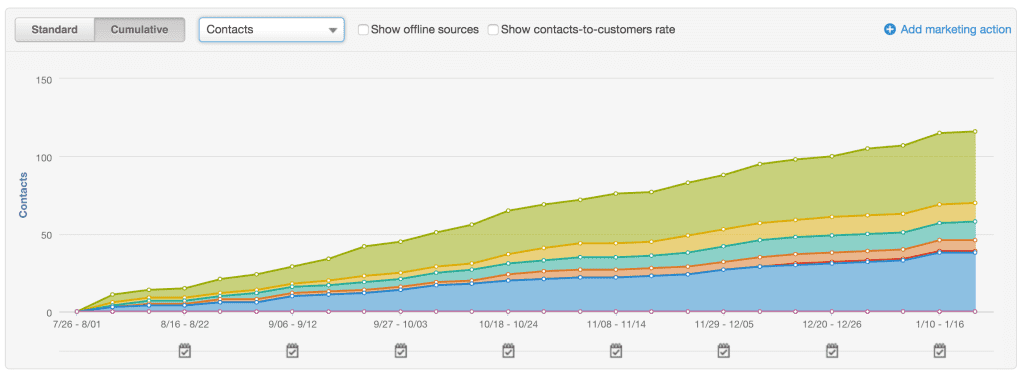Increased Agency Leads 120%
Helped grow the agency through content creation and inbound marketing.

While working in the inbound marketing department at the digital agency EYEMAGINE, I managed inbound marketing campaigns for clients and the agency itself for a brief period of time. My department was treating EYEMAGINE like a client and I managed the content and other one-off campaigns.
My goal was to generate more sales qualified leads (SQLs) for the web design and development side of the agency, as well as the inbound marketing side.
Problem
At the time, EYEMAGINE didn’t have any dedicated employees helping with marketing. With the use of outsourcers and limited time from other employees, my associate and I were tasked with completely managing EYEMAGINE’s inbound marketing while managing our four other clients.
Before working on EYEMAGINE, we struggled to get over 50 views on any given blog post and get more than 10 leads per month from the website.
Solution
My primary focus was getting more SQLs so our salesperson could schedule more meetings with new potential clients.
I started optimizing the sales funnel from the bottom up by first setting up lead scoring, creating automated internal emails to our salesperson of lead activity, and creating special campaigns to push leads to schedule a call when they are on the fence.
Once a proper lead scoring system was put in place, I created premium email-bait content in the form of educational eBooks to convert visitors into leads. During this time, I also completely changed the content strategy to get more traffic, shares, and conversions from blog posts.
Lead Scoring
Properly setting up and actively maintaining lead scoring is an integral tool for improving a B2B sales funnel. In EYEMAGINE’s case, I used lead scoring to notify our salesperson of marketing qualified leads (MQLs) who were engaging with our content more than most and who didn’t request a consultation.
We gave points to MQLs every time they downloaded a new eBook, viewed a piece of content made for MQLs in the consideration and decision stage of the buyer’s journey, opened and clicked emails, and more.
When their score reached higher than the breaking point, it triggered an automated email to our salesperson with all their information. The email told the salesperson to call them and nurture the lead, because they didn’t request the call.
Premium Content
The eBooks EYEMAGINE had before I started working on them were good topic wise, but the actual content and design needed drastic improvement in order to instill confidence in the MQL that EYEMAGINE was the right solution for their web project and inbound marketing.
Here’s what the premium content looked like before:
- How to Develop a Mobile Strategy
- Driving Conversions with User Experience Design
- 10 Useless Things to Cut From Your Marketing
Upon discovering these pieces of content could be potentially turning away SQLs, I decided to make it a priority to publish new eBooks with a premium design and better content. Since EYEMAGINE is a HubSpot Platinum partner, I leveraged our relationship and worked with them to publish HubSpot’s best eBook on inbound marketing for eCommerce — The Inbound Commerce Playbook.
I found a contractor and worked with them on writing the content. HubSpot published the eBook on their site and promoted it to their audience. With our name and links in the eBook, this was a huge opportunity to get new leads and improve the brand.

Other eBooks that were published under my guidance:
- Product Pages That Sell
- The Inbound Commerce Methodology
- Introduction to eCommerce Marketing Automation
Once leads enter their information, they land on the Thank You page. Below the link to download their eBook, I included another conversion opportunity to schedule a consultation call. Surprisingly, this worked extremely well at converting MQLs to SQLs.
Free Site Audit Campaign
EYEMAGINE’s contact list was over 3,500 contacts and we weren’t getting much of a response from them when we sent out emails. To try and reach them and to convert our MQLs who were on the fence of scheduling a consultation, I created a “free site audit” campaign.
This campaign consisted of a series of three emails and enticed MQLs to schedule a consultation by receiving a site audit for free. The emails were sent in near plain text and looked like any other email that we would send. This made the email look personal and resonated with the audience.
Recipients were asked to just reply to the email, but a landing page was also created if they wanted a little more information.
The campaign resulted in 12 new SQLs and three meetings. Out of the three, we closed two new clients as a direct result from this campaign. Because of it’s success, this campaign is now being run every quarter.
Webinar
To leverage our relationship with HubSpot an additional time, I contacted our channel advisor and asked if he would be interested in participating in a webinar with one of our Inbound Marketing Consultants.
I created the strategy for the webinar and promoteed it to our email list, social media followers, and had HubSpot promote it on their social channels as well. Using HubSpot again allowed us to get in front of a new and larger audience.
Here is the webinar slide deck:
I positioned the webinar to be educational for participants. We showed them five key inbound marketing automation tactics and in each tactic we sprinkled our own case studies of them in effect to show off our work.
The webinar produced phenomenal results. We had over 40 confirmed registered participants and scheduled more than five consultations.
Content
As an inbound marketing agency, we weren’t doing so good with the EYEMAGINE blog. Publishing content on the topic of inbound marketing is severely saturated so we needed to make drastic changes to stand out.
First, I created a content catalog to log all of our existing content and find the gaps. Content were assigned a buyer persona, a stage of the buyer’s journey, a topic, a keyword, and a call-to-action (CTA). This was able to tell me what new content we needed and also what pieces of content were on the same topic/keyword that I could combine to create a stronger piece.
Second, I used the blog catalog to create a content strategy for the next 6 months.
Third, I stopped paying contractors $60 for a blog post — it wasn’t a big enough investment to achieve any kind of results. I found freelance writers and content companies to provide better and longer content for our blog. When I had the time, I would write content that focused on providing value to the reader while also showing off our work to build trust, authority, and expertise to our readers.
Here’s some examples of content I wrote or helped write for the blog that did better in terms of traffic, shares, and conversions than most blog posts:
- 7 Tactics We Used to Increase Our Landing Page Conversion Rate by 222%
- How One Carefully Crafted eBook Generated over 350 Leads
- Integrating HubSpot & Magento: 43% Increase in Revenue Year-Over-Year
Each piece of content ends with a CTA — either to one of our eBooks or to schedule a consultation depending on which stage of the buyer’s journey the content is for.

Result
From implementing better lead scoring, premium email-bait content, launch one-off campaigns, and creating better content, my associate and I were able to increase the number of MQLs and new clients for EYEMAGINE.

Before managing EYEMAGINE’s inbound marketing, they would receive an average of 10 leads per month. By January 2016, they were receiving anywhere from 18–26 new contacts per month. Not shown in the above graph, the number of new SQLs per month also increased dramatically.
